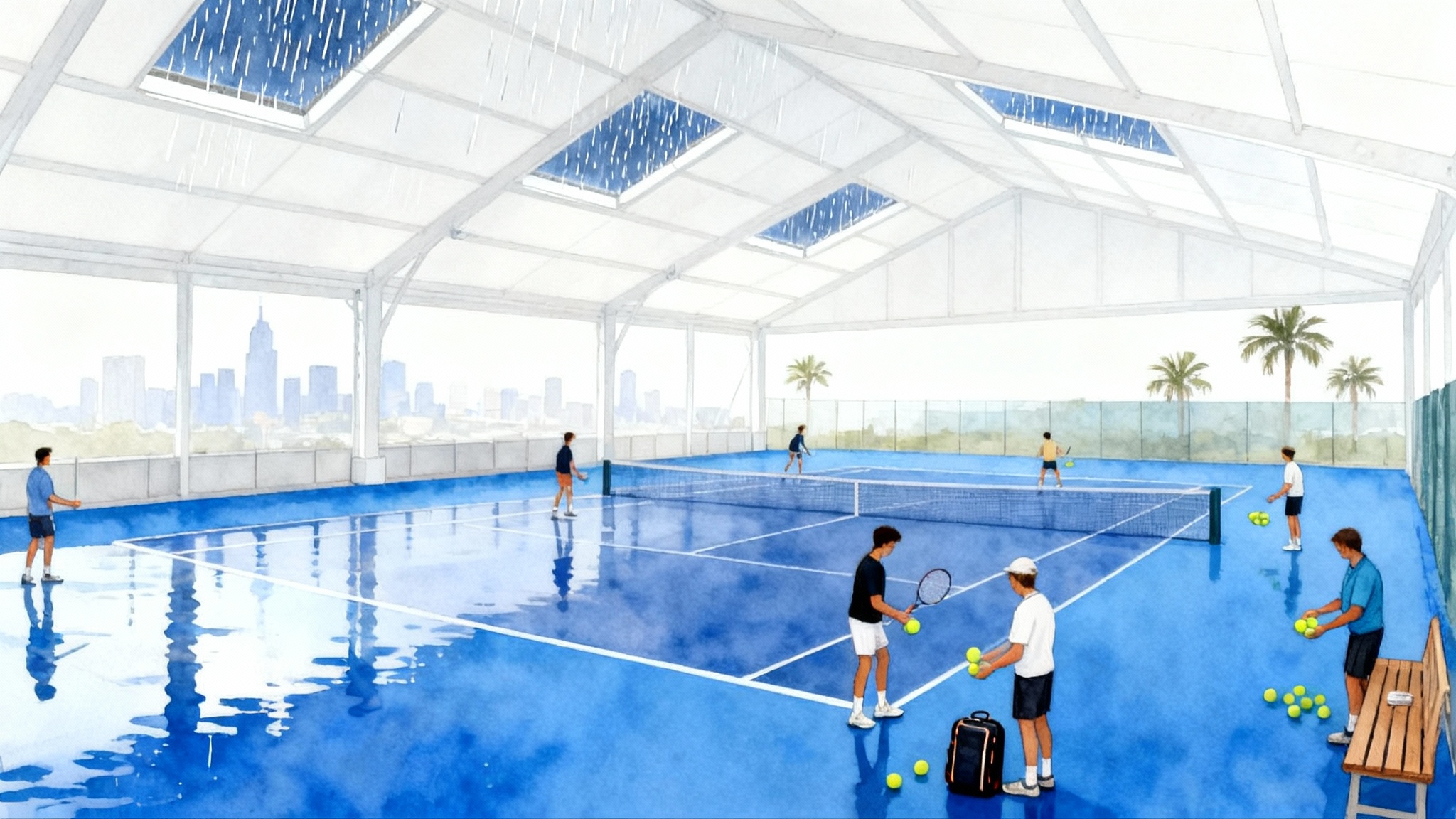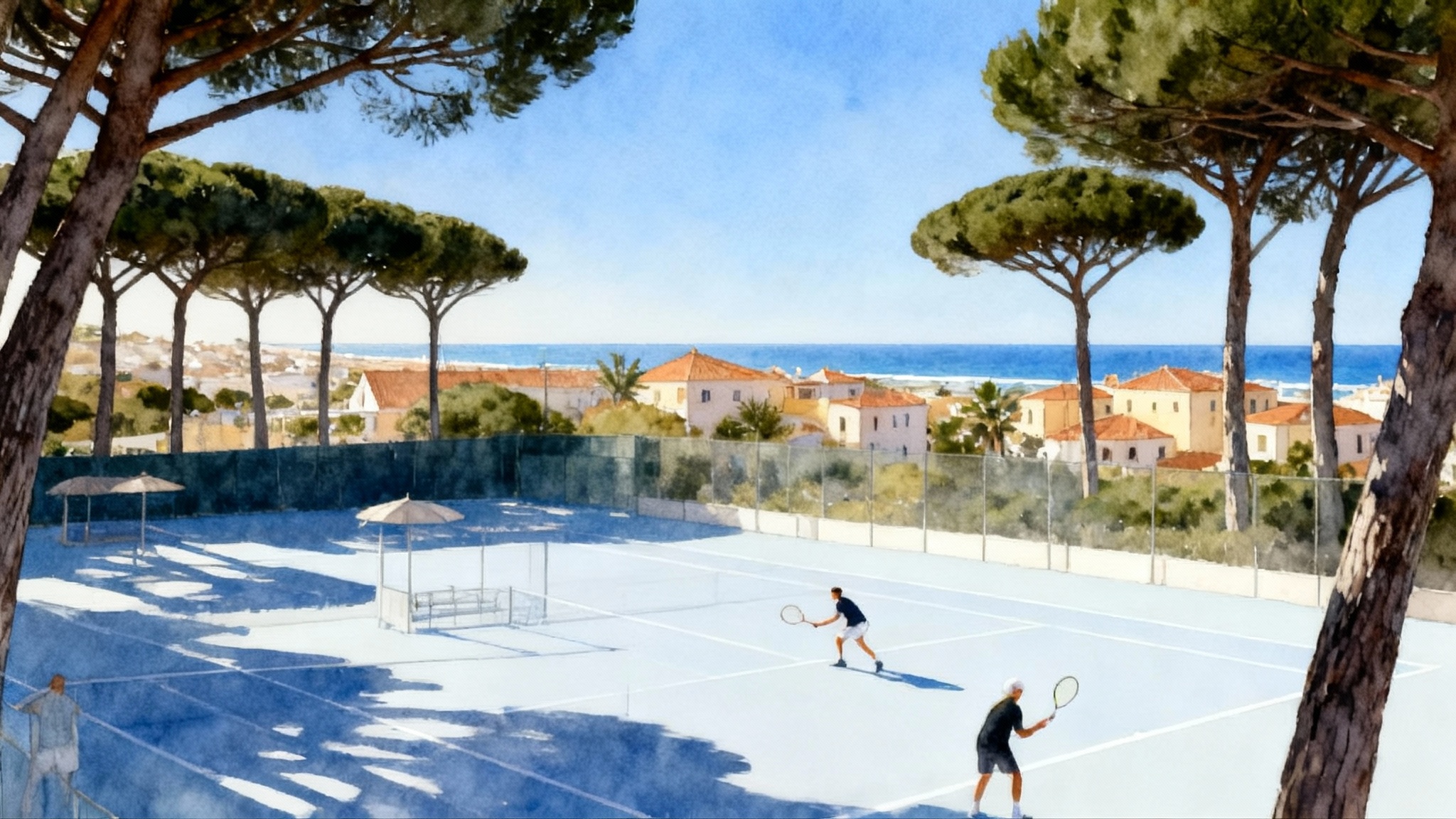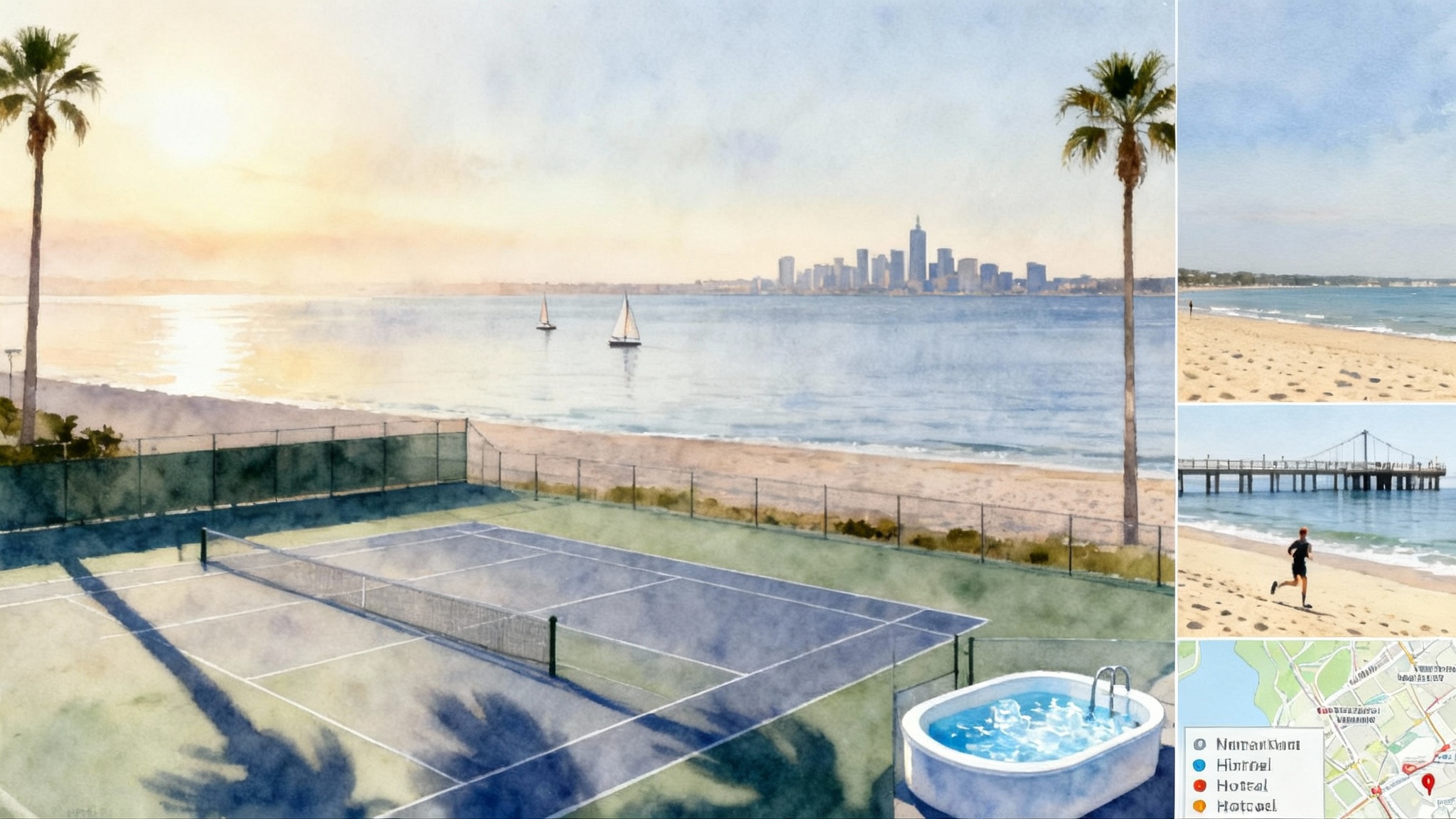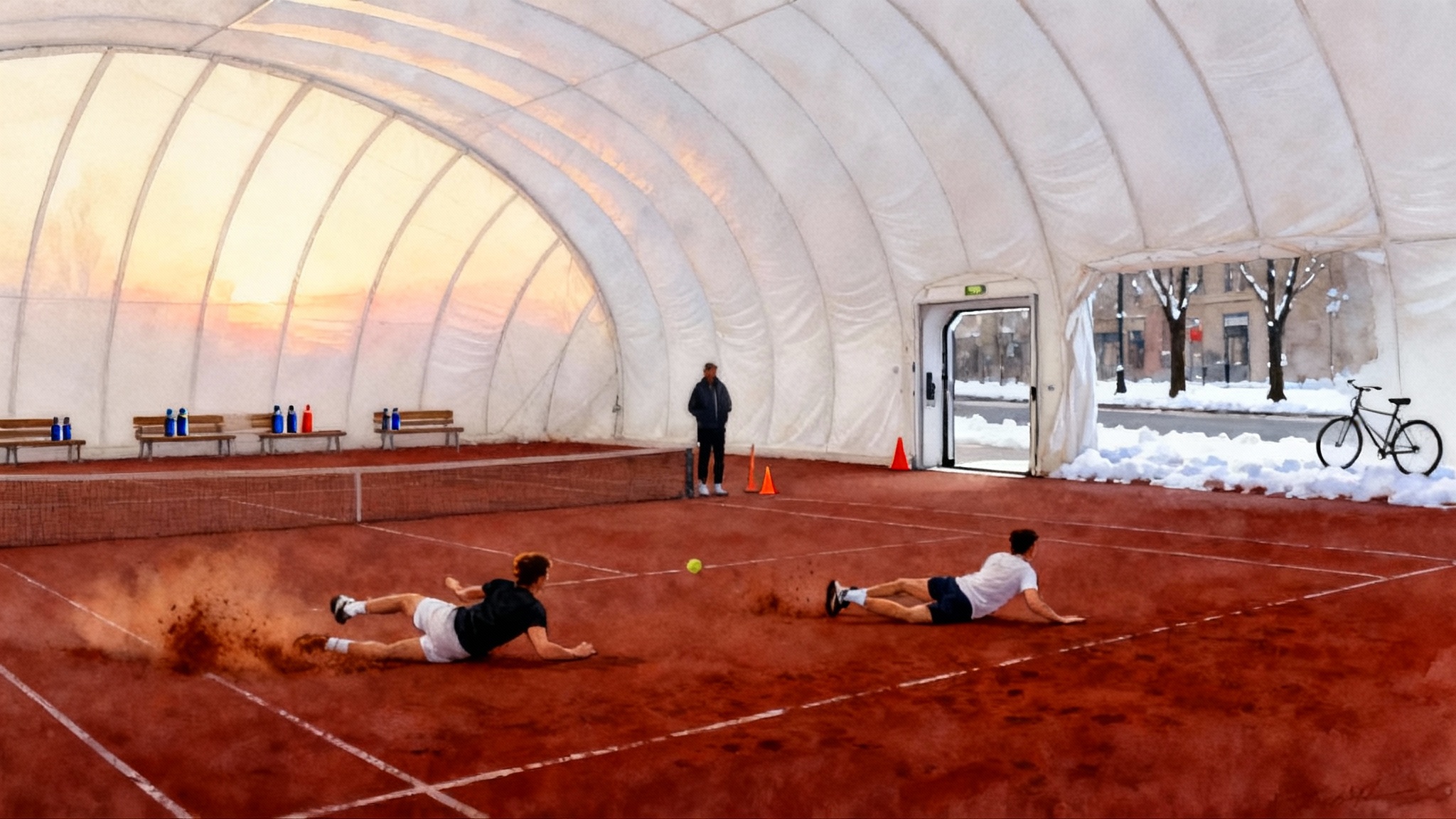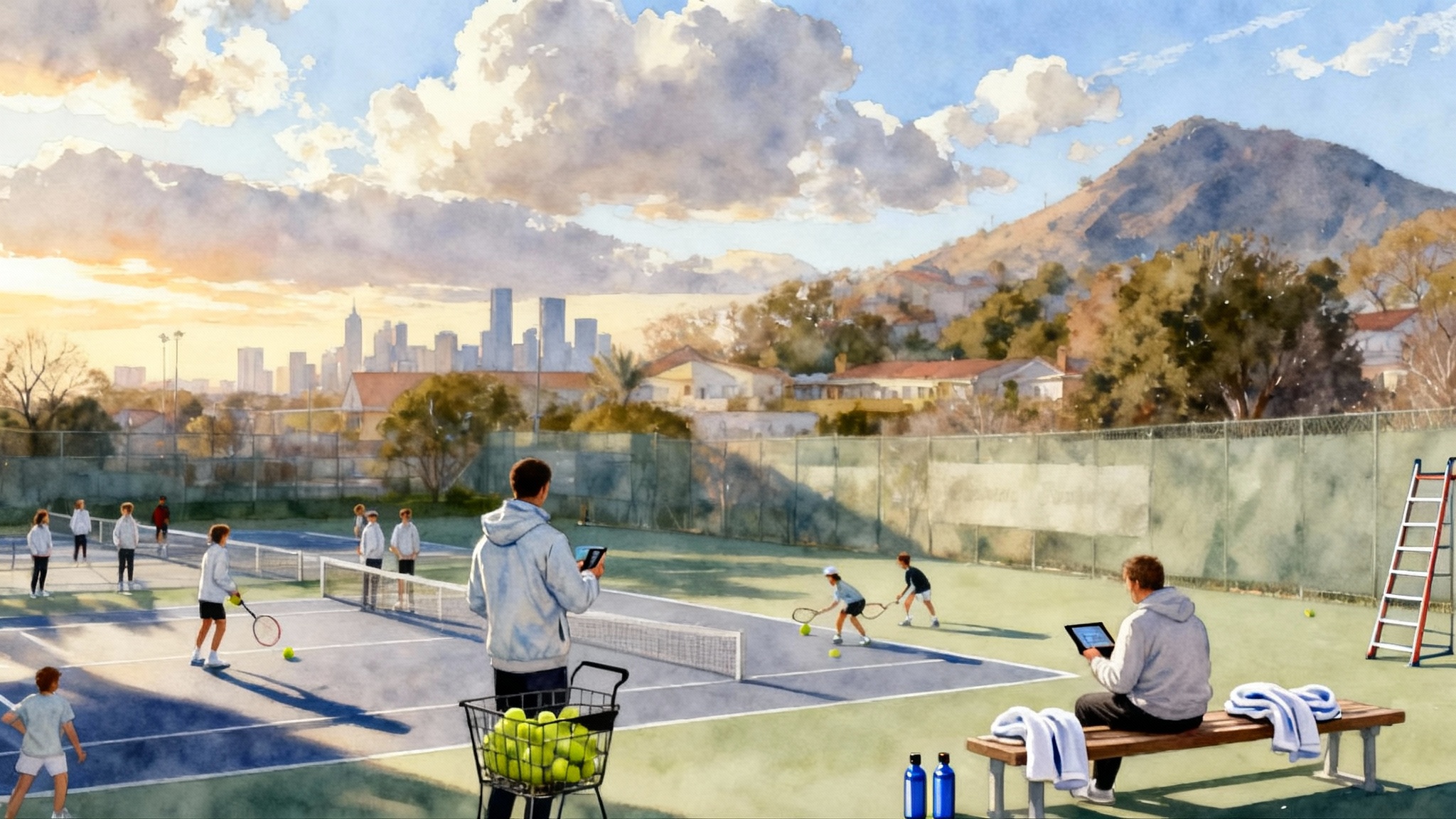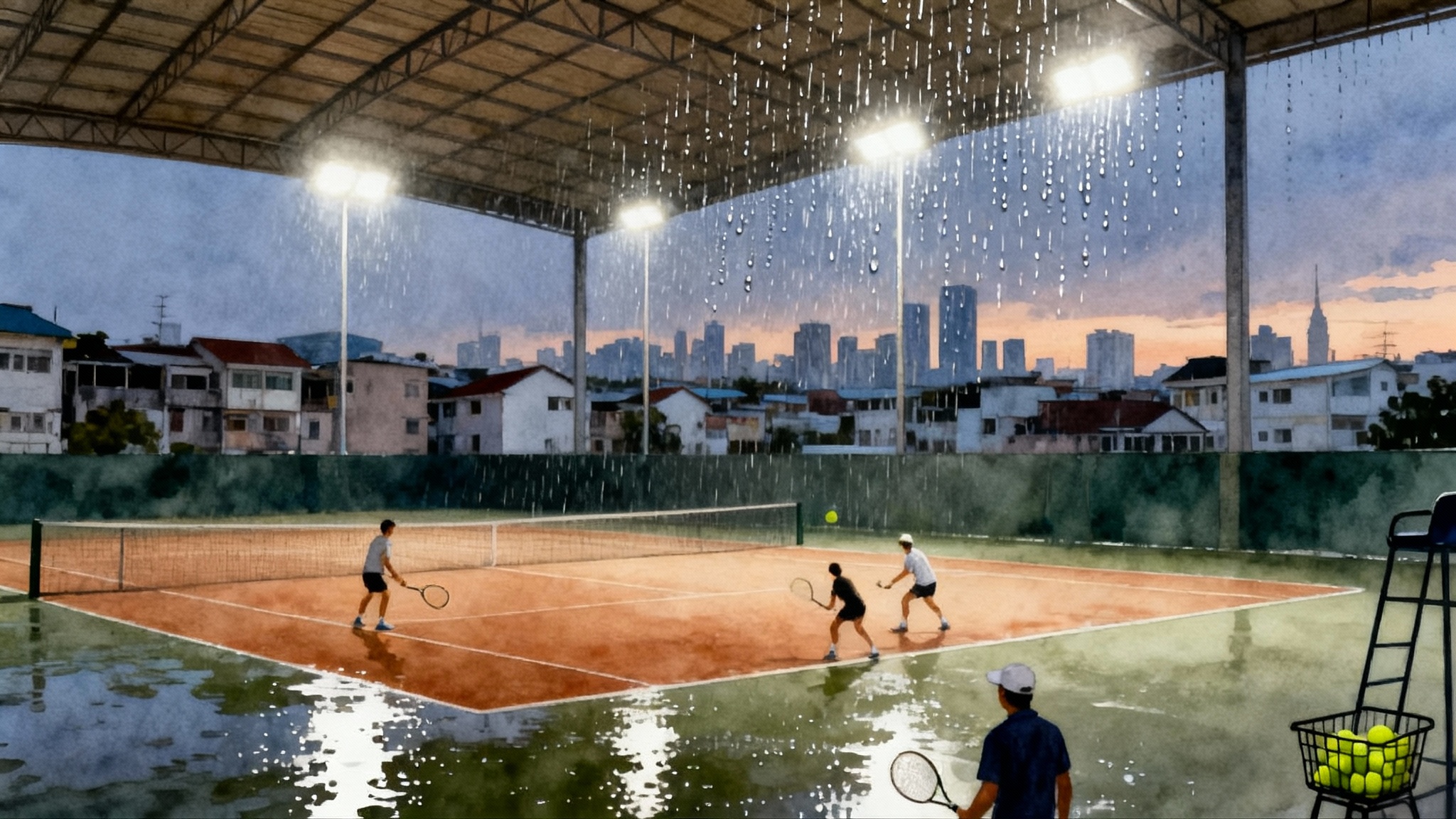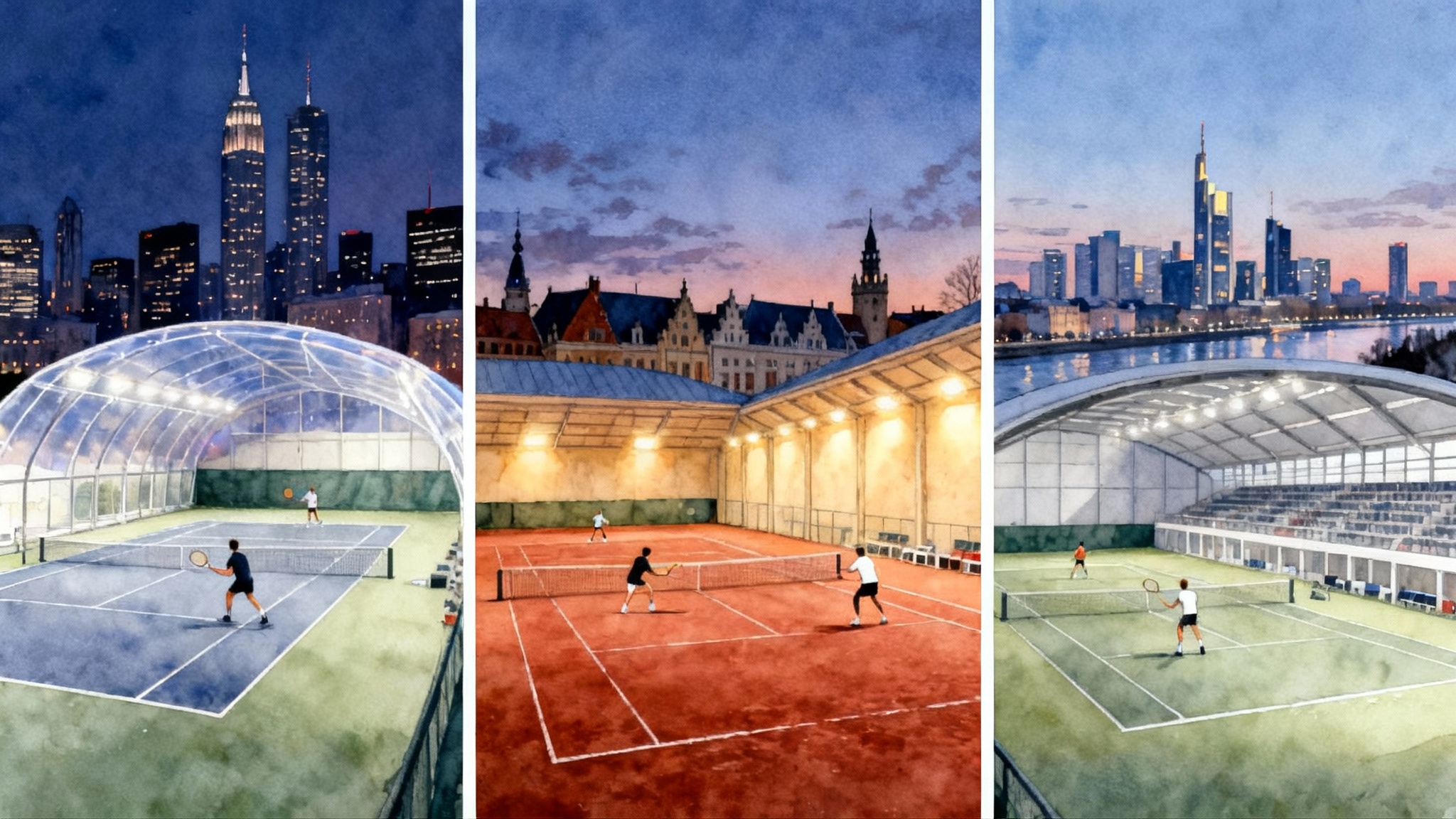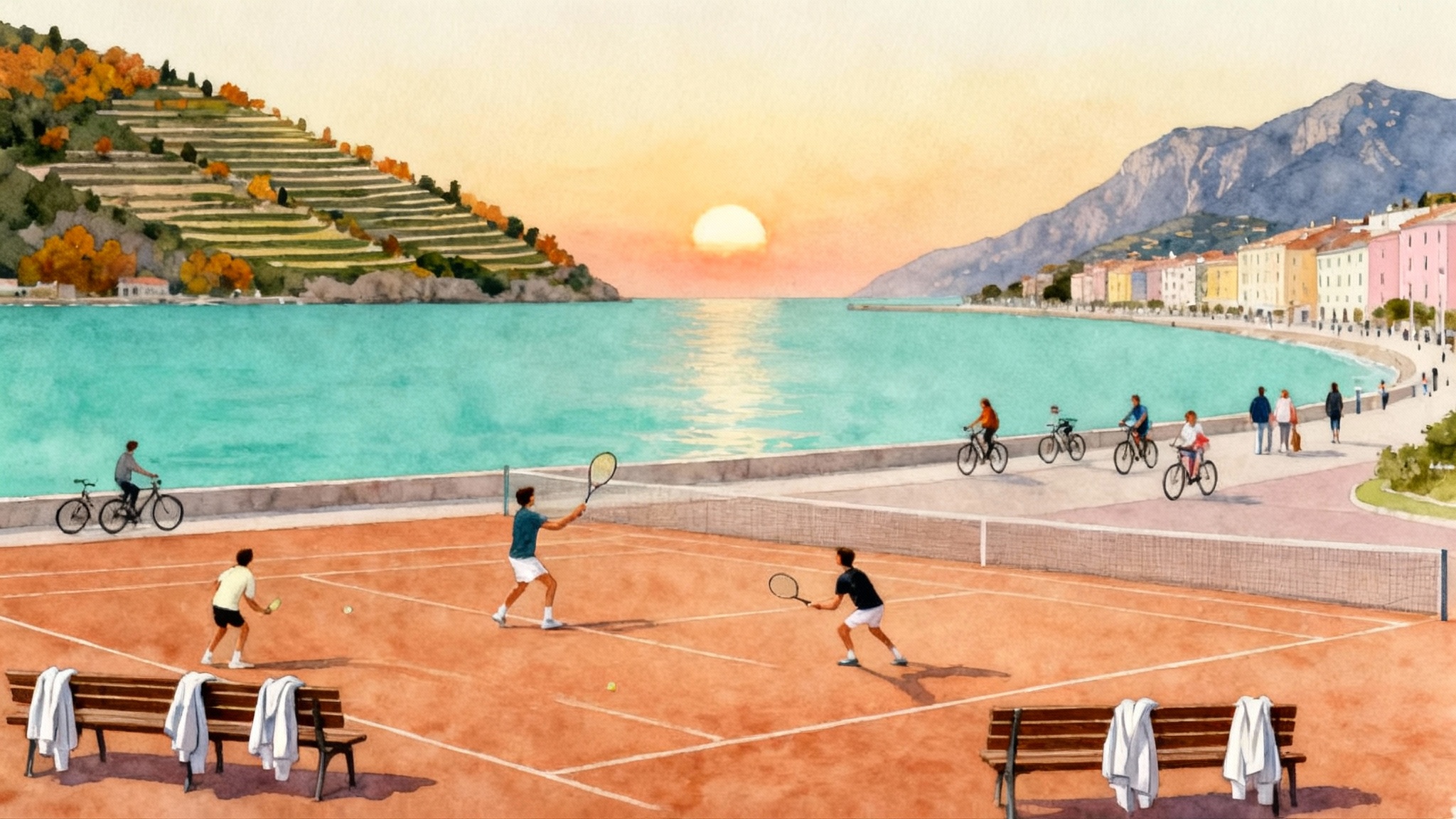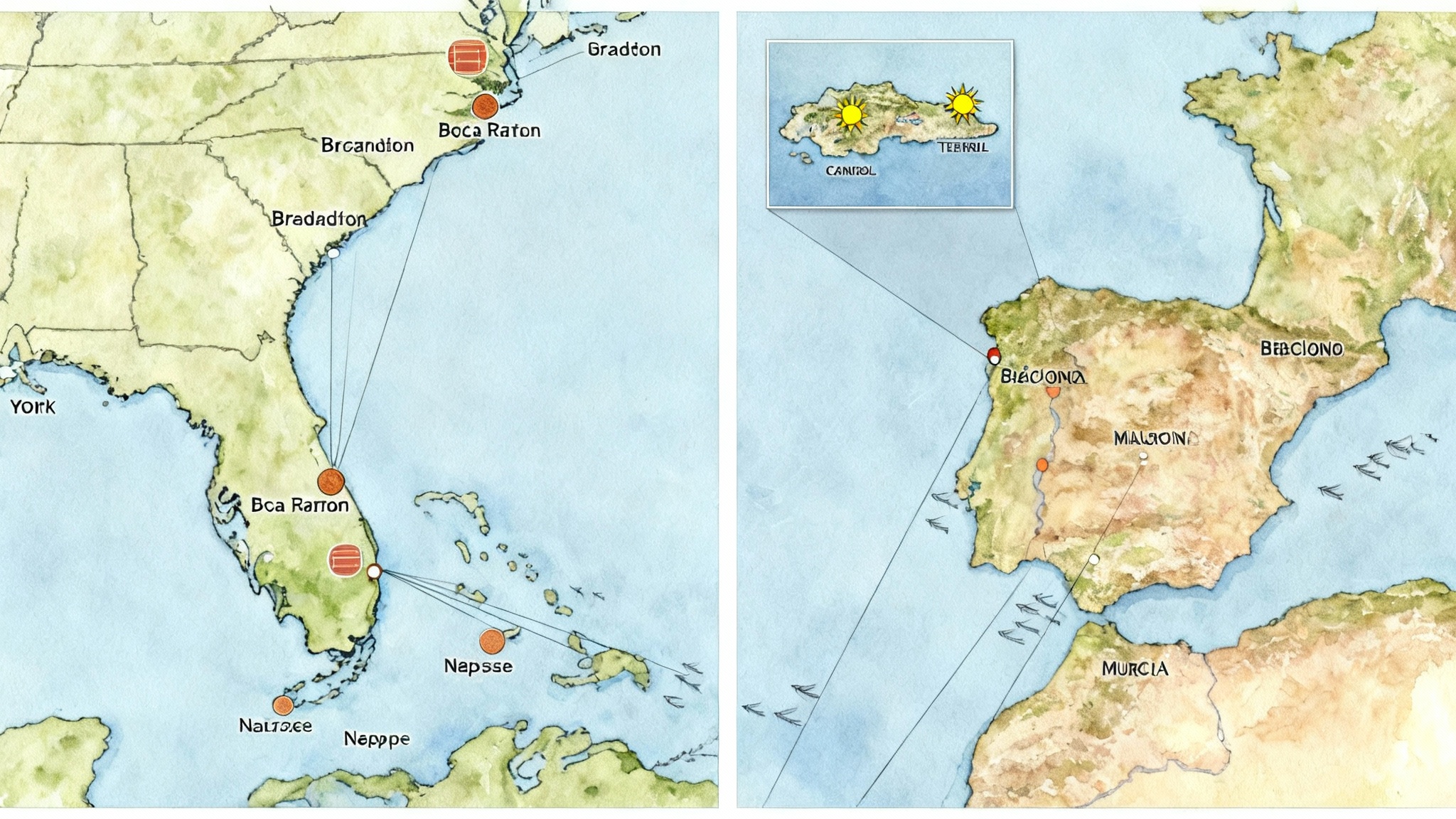Alpine Tennis 2025–26: High-Altitude Camps in the Alps
Plan your summer tennis block where the air is cooler and the rallies are crisper. From June to September, Austria, Switzerland, and Northern Italy offer 700–1,200m training, two-a-day sessions, and family-friendly resort bases.
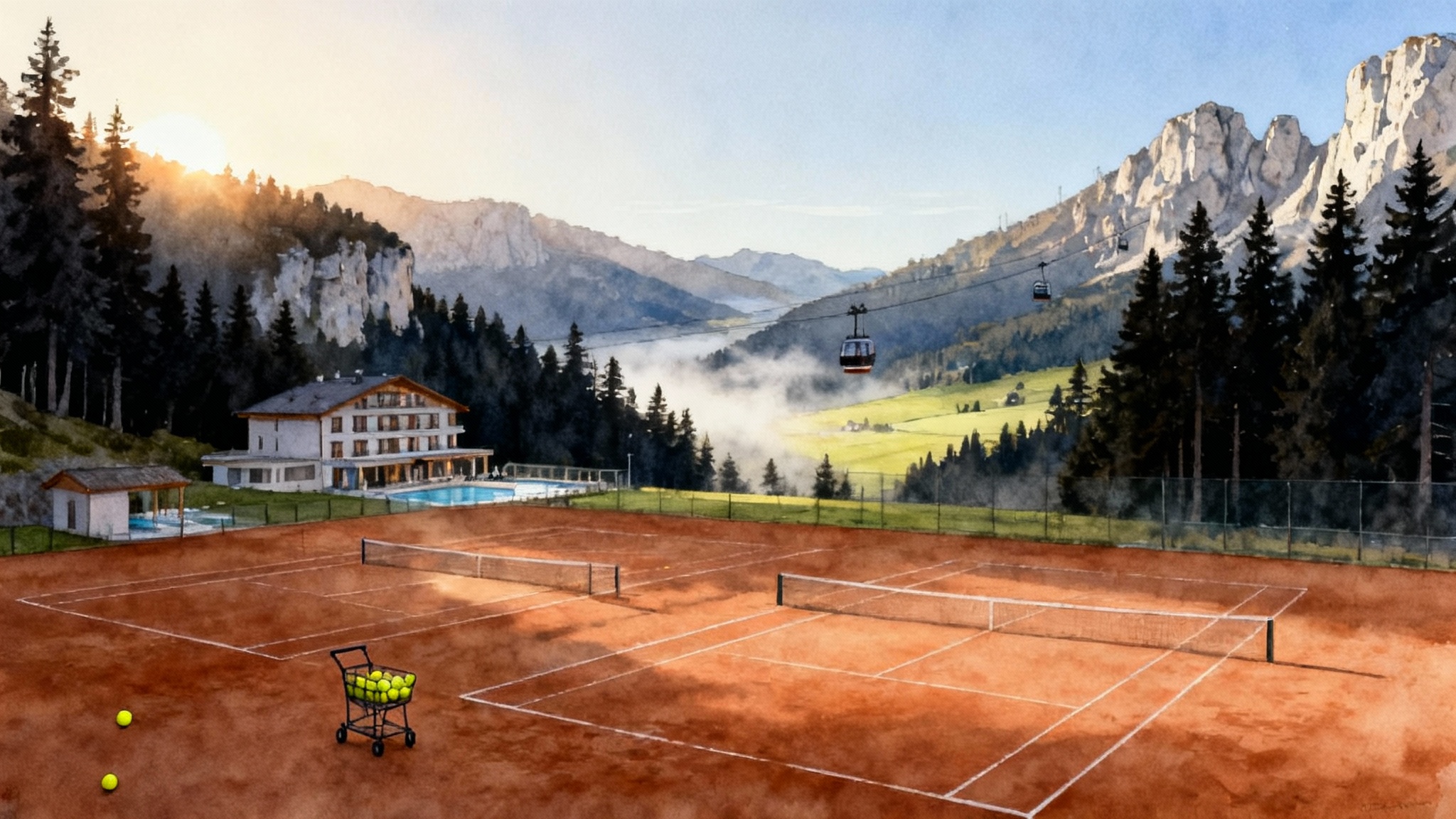
Why the Alps are built for summer tennis blocks
From June to September, alpine valleys in Austria, Switzerland, and Northern Italy sit in a sweet spot: morning lows in the 50s Fahrenheit and afternoon highs usually in the 60s to upper 70s. Humidity is lower than on the coast, and evening cool-down is reliable. That combination reduces heat strain and lets you schedule two outdoor sessions per day with less recovery cost.
Coastal heat pushes practice into short windows and forces compromises on intensity. In the Alps, you can work longer on court and keep quality high, then recover properly with cold water, shade, and sleep that is not battling room temperatures. The net result is more useful swings per week and better adaptation. If you prefer a sea-level clay option for other parts of the year, see our Barcelona Coast clay training guide.
What 700–1,200 meters does to ball flight and body
Training blocks in places like the Kitzbühel Alps, Engadine, and Dolomites typically sit between 700 and 1,200 meters above sea level. Air density decreases as you go up. At 1,000 meters, the air is roughly ten percent thinner than at sea level. That matters for two reasons:
- Ball flight: With less drag, your ball travels a bit faster and carries deeper for the same swing. Serves jump off the strings and pass through the court more quickly. Topspin still bites, but the arc is slightly flatter, so net clearance habits need attention.
- Bounce behavior: A faster incoming ball reaches the court with more speed and a touch less vertical arc, so the first bounce can feel more lively and skids a bit on hard court. On clay, the bounce stays true but gets through the hitting zone faster.
- Footwork: The court does not change, but the time you have between bounces does. Expect to start your split step a hair earlier, take one extra adjustment step on approach balls, and exaggerate low posture on returns to manage the quicker path through contact.
- Physiology: Cooler temps and lower humidity reduce cardiac strain at a given workload, so you can push hard without the drain you get at sea level in August. Moderate altitude also nudges breathing rate up a touch, which many players notice on long rallies. At 700–1,200 meters this is manageable with one acclimation day. Hydration and sleep hygiene become the main levers.
Practical string and setup notes:
- Increase string tension by 1–2 kilograms to contain depth, especially if you hit a heavy forehand.
- If you normally use a livelier multifilament, consider a firmer poly or a hybrid during the block.
- The United States Tennis Association flags 1,219 meters and above as high altitude for competition balls. At 700–1,200 meters you usually stay with standard balls, but bring one can of high-altitude balls if you will visit courts around 1,200 meters to test in practice. For context, see the USTA high altitude ball threshold.
Two-a-day scheduling that actually works
The hallmark of an alpine block is a longer day with a genuine recovery middle. Use the climate to your advantage:
- Morning session (08:00–10:30): Technical priorities and high-quality live ball.
- Midday recovery (10:30–16:00): Fuel, nap, mobility, light walk, and spa. Avoid intense hiking on heavy training days.
- Late session (16:00–18:00): Set-piece work: patterns, point starts, serve plus one, return plus one.
This structure keeps your total weekly volume high without the dead legs that come from practicing in heat.
Where to base your block: resort academies with family appeal
You want tennis quality first, but if you are traveling with a partner, kids, or friends who are not on court, the resort envelope matters.
- Lärchenhof Tennis Academy, Markus Hipfl Tennis Base, Tyrol, Austria: A well-known five star resort setting with multiple clay courts, structured adult and junior programs, and the kind of spa and pool deck that makes a non-tennis afternoon feel like the point of the trip. The location near the Kitzbühel Alps keeps you in that 700–900 meter band with quick access to hiking trails and bike paths.
- European Tennis Academy, various alpine locations: A hub-and-spoke model across Switzerland, Austria, and Northern Italy that mixes private sessions with group clinics. Many partner resorts sit near lakes or lift stations, which turns rest days into gondola rides and easy family hikes. Expect a clay-first experience with some hard courts and indoor options depending on the site.
Other smart bases for this style of block include Engadine towns like St. Moritz and Pontresina in Switzerland, South Tyrol villages such as Seis and Ortisei in Northern Italy, and Austrian valleys around Seefeld and Zell am See. Look for resorts with indoor halls or covered courts, since mountain weather likes to throw a midday shower or an afternoon thunderstorm.
Sample weekly plans you can copy
Below are three plug-and-play outlines. Adjust the hours to your level and add physical training if you handle volume well.
1) Adult competitor week
Goal: sharpen patterns, add serve pace you can keep, raise rally tolerance without frying in the sun.
- Monday
- 08:00–09:30 Technical tune: forehand height control, backhand depth windows
- 09:30–10:30 Live crosscourts to down-the-line change
- 16:00–17:00 Serve buckets with targets, add 10 first serve plus one patterns
- 17:00–18:00 Point play to seven, start at 30–30
- Tuesday
- 08:00–10:00 Return day: body returns, short backswings, first ball neutralization
- 16:00–18:00 Approach and finish, mid-court footwork ladders between games
- Wednesday
- 08:00–09:30 Pattern audit: three bread and butter patterns you will keep for matches
- 09:30–10:30 Tie-break sets, play the deuce side with a specific target
- 16:30–17:30 Mobility and band work on court, short serves to recover
- Thursday
- 08:00–10:00 Serve plus one patterns under heart rate cap, track depth with cones
- 16:00–18:00 Singles set with constraints: free on serve games, two cross then change on return games
- Friday
- 08:00–09:30 Defensive scrambles, sky balls, and depth resets
- 09:30–10:30 Doubles returns and poach reads
- 16:00–17:30 Tie-break ladder with locals or academy group
- Saturday
- 08:00–09:30 Point play, short sets first to four
- Finish with serve accuracy test: 40 first serves, goal 28 in with three target zones
- Sunday
- Full rest or 60 minute light hit, lake walk, long sleep
2) Junior development week
Goal: rep volume with guardrails, build decision skills, and keep it fun for a growing athlete.
- Monday to Friday mornings
08:00–10:15 Drills that feed live ball quickly: two-ball patterns, transition games, serve and return slots
Daily focus rotates: height control Monday, spacing Tuesday, consistency Wednesday, serve mechanics Thursday, returns Friday - Monday to Friday late session
16:00–17:30 Match play with constraints that teach decisions: two cross before line change, approach only on balls landing inside the service line, return through the middle on big serves - Saturday
09:00–11:00 Team day with doubles patterns, communication, and a short round robin - Sunday
Morning gondola ride or swim, afternoon stretch and packing
Parent notes: aim for 9–10 hours of sleep, a big breakfast, and a real lunch. Add a 30 minute nap after the meal on heavy days. Schedule screen time after dinner, not before afternoon practice.
3) Family tennis and hiking mix
Goal: keep two daily touches for the tennis lover while the family enjoys the mountains.
- Monday, Wednesday, Friday
08:00–09:15 Private or semi-private technical session
16:30–18:00 Social doubles or mixed clinic - Tuesday, Thursday
07:30–08:30 Serve and return only
Long family hike or e-bike ride midday, easy swim before dinner - Saturday
09:00–10:30 Fun tie-breaks with the group, kids rally challenge - Sunday
Brunch and travel
Rain and indoor contingencies
Alpine weather loves an afternoon storm. Plan for it rather than hoping it will not show up.
- Book resorts with at least two indoor courts on site or within a short drive.
- Front load important technical work to morning sessions. Use late sessions for serves, returns, and footwork circuits that translate well indoors.
- Pack a mini program for hallway or fitness room: jump rope, shadow swings, hip airplanes, band rows, ankle dorsiflexion drills. Twenty focused minutes beats a frustrated hour waiting out rain.
- Clay courts can be ready 30 to 60 minutes after showers if sun returns. Ask the pro desk to text when the surface is playable.
Surfaces and footwear
Most alpine clubs are clay-first, with a growing number of hard courts and many indoor carpet or hard options. For clay, bring shoes with a full herringbone tread. On carpet, request non-marking soles. If you will split time across surfaces, pack two shoes and rotate to keep traction predictable.
Recovery that feels like part of the trip
Recovery is not a punishment block in the Alps. Use what the mountains give you:
- Cold exposure: Rivers and lakes are real ice baths without the drama. Two minutes thigh deep after the morning session is plenty.
- Spa circuit: Sauna, warm pool, cold shower, and 15 minutes horizontal in a quiet room. It reduces soreness and helps sleep onset.
- Food: Prioritize breakfast with protein and slow carbs. Alpine menus are friendly to simple choices like eggs, grain bread, yogurt, fruit, and oats. Lunch should be real, not a bar in your pocket.
- Sleep: Rooms cool down naturally at night. Crack a window and darken the room fully. Plan for a short nap on heavier days.
Logistics for travelers from the United States
Airports and routes that make sense:
- Austria: Fly to Munich or Vienna, then connect or take the train to Tyrol bases such as Kitzbühel, St. Johann in Tirol, or Seefeld. Munich to Kitzbühel by train takes about two to two and a half hours with one change.
- Switzerland: Fly to Zurich for Engadine or eastern Swiss bases, to Geneva for the western Alps. Zurich to St. Moritz is roughly four hours by train with a scenic final leg.
- Northern Italy: Fly to Milan Malpensa, Venice, or Verona for South Tyrol and Dolomites. Milan to Bolzano is about three hours by train, then 40 to 60 minutes by car or bus into villages like Ortisei or Selva.
Ground transport tips:
- Trains: Europe’s rail network is reliable and comfortable. If you are carrying multiple rackets and a roller bag, first class can be worth it for space.
- Car rentals: Reserve early in July and August. Check for Austrian or Swiss motorway vignettes and plan for mountain parking fees in resort towns.
- Time zones: Central European Summer Time is six hours ahead of Eastern Daylight Time and nine ahead of Pacific Daylight Time. Arrive a day early to let sleep and timing catch up.
- Connectivity: An eSIM with Europe coverage simplifies maps and rail apps. Download your rail tickets to the wallet app in case service drops in valleys.
Budget and booking windows for 2025–26
- June is shoulder season with sturdy availability and better pricing. Courts are open, trails are quiet, and weather supports full training weeks.
- July and early August are peak. Book four to six months ahead for resort rooms that are close to courts. Indoor backup courts can sell out on wet weeks.
- Late August into September is ideal for adults seeking quieter resorts. Nights are cooler, and you still have long light for evening sets.
Expect to pay resort rates for on-site coaching. Savings come from multi-day packages that bundle court time, lessons, and spa access. If traveling with a family, a half board plan that includes breakfast and dinner makes the day smoother and often cheaper than eating out twice.
How to adapt on day one
- Take a light hit the afternoon you arrive. Shadow swings, mini tennis, and serves at 70 percent. Wake early the next day for your first full session.
- Check depth with cones on the baseline and service line. Your usual swing might land a meter deeper at altitude. Confirm before live ball.
- Serve targets from the start. Aim for body and T serves to learn your movement and bounce in local conditions.
- Footwork cue: split step earlier than you think, then add one adjustment step on every approach.
Gear checklist for an alpine block
- Two frames strung at your home tension plus one at +2 kilograms
- Clay and hard court shoes if you plan to mix surfaces
- Light jacket and midlayer for cool mornings, hat and sunscreen for clear afternoons
- Bands, jump rope, massage ball, and a small travel roller
- Swimsuit for spa and lake recovery
- Small packable umbrella or lightweight rain shell for quick storms
Putting it together with resort academies
Resort-based programs remove friction. Lärchenhof Tennis Academy gives you a clear daily schedule, kid-friendly clinics, strong private-coach depth, and a spa that keeps non-players happy. European Tennis Academy places you in properties where a hike, a lift ride, or a lake swim is a few minutes away, plus indoor halls for rainy spells. For families, that is the difference between a good week and a great one.
When you inquire, ask three direct questions:
- How many indoor courts are available to guests if it rains in the afternoon?
- Can you confirm ball brand, surface maintenance schedule, and booking windows for prime morning slots?
- Do you offer multi-day lesson packages that include stringing, video, and post-session notes?
A simple action plan
- Choose your window: June for value, July to early August for peak energy, early September for quieter resorts.
- Pick a base at 700–1,200 meters with indoor backup and easy family activities.
- Book two daily slots for five to six days. Protect the middle of the day for recovery.
- Bring one frame strung firmer than usual and plan to test depth on day one.
- Use serves and returns as your anchor on weather-challenged days.
- Protect sleep. The cool nights are a feature, not a bonus.
The bottom line
An alpine summer block trades the fight against heat for focused volume in cool air. At 700–1,200 meters the ball runs a little faster, your timing sharpens, and your body finishes the day ready for the next. Base yourself at a resort academy that welcomes families, build two-a-day rhythm around mornings and late afternoons, and let the mountains make your training week feel like a holiday that also moves your tennis forward.
